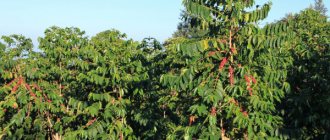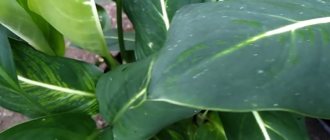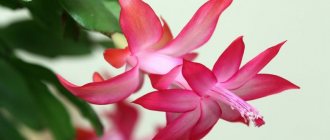In the wild you can find interesting varieties of Sansevieria, but only some varieties develop well in indoor conditions. This is a popular ornamental plant that is quite easy to care for. The flower has an attractive appearance and also has a number of medicinal properties. You can see what sansevieria looks like in the photo below.
Biological certificate
The Sansevieria plant is an evergreen herbaceous perennial belonging to the Asparagus family. In its natural environment, it is found in Asia, Africa and Madagascar, and is also widespread as a houseplant.
Sansevieria is called differently in different countries. Mother-in-law's tongue or women's tongue, the sword of St. George, the tiger's tail and the pasha's sword are not all the names of this amazing plant. The name of the genus Sansevieria is given in honor of the Italian scientist and inventor Raimondo di Sangro (1710–1771), Prince of San Severo (San Severo is a commune in Italy).
Types and description
In total, there are about 200 species belonging to the genus Sansevieria, which in turn are divided into three subspecies:
- Sansevieria
- Dracomima
- Cephalantha
Photos of Sansevieria taken in different parts of the world show that it is not always a plant with long leaves and no flowers. Sometimes it is a succulent desert plant, sometimes a tropical plant with thin foliage. Many Sansevierias have one feature - the foliage, as a rule, is located in the form of a rosette around the growing point.
Sansevierias come from regions with arid climates and have tough, thick leaves to store moisture. They have special cuticles to reduce moisture loss and a cylindrical, shorter leaf shape.
Subtropical Sansevierias do not need such “accessories”; they have softer, wider and longer leaves.
General characteristics
Sansevieria laurenti is a succulent . It has long, erect and rigid leaves extending from a creeping rhizome. Along the entire length of the light leaves there are transverse green stripes. Arrow-shaped leaves can reach 1 meter.
Flowers
The description of a plant flower also cannot be the same for all species. Typically, the flowers are greenish-white, pink, lilac-red and brown.
Sansevieria carnea, growing in Japan and China, will surprise you with its delicate purple small flowers, Sansevieria cylindrica is characterized by a long branch growing from a rosette with many pale flowers, and the flowers of the huge Sansevieria kirkii, growing in Tanzania, can be compared to the hair of a brownie or a clown. The fruits are red and orange berries.
In nature, Sansevieria flowers are pollinated by moths, but both flowering and fruiting are unstable, and few seeds are produced. Seeds are not the easiest way to propagate this plant at home.
Use in the world
In Africa, ropes are made from the leaves of the plant. It is also used as a medicine with antiseptic properties. In addition, it is possible to make a bow string from the leaves.
Sansevieria is considered one of the most successful plants for growing at home, especially in the bedroom, due to its ability to release oxygen at night.
In Asia, the plant is revered and given as a gift for various holidays. Perhaps it was precisely because of its healing properties and ability to purify the air, which people who lived in ancient times knew about. It is not recommended to keep the flower within reach of small children. Despite its beneficial qualities, Sansevieria leaves are poisonous.
In Barbados, Sansevieria is also often called the “money plant”, in the belief that the person who has it will always have money.
Sansevieria can be found in many foreign films as decoration. The plant is also loved by people who are interested in Feng Shui.
Where to put
— Lighting . In shaded places, the plant slows down its growth; in deep shade, growth stops, but the plant itself survives safely. When changing location, plants undergo an adaptation period - the plant is moved gradually, allowing it to get used to the new conditions before determining its final location.
- Temperature. Sansevieria is undemanding to temperature, but responds well to heat. If watering is limited, it can withstand low temperatures, even frost, but for a short time. In summer in temperate latitudes it can be planted in open ground.
- Humidity . It grows well in dry air, but also likes periodic spraying with lukewarm water and wiping the leaves with a damp sponge or cloth.
Home care
Residents of countries with temperate climates are more familiar with Sansevieria Three-Stripe. In its natural environment it grows in western Central Africa. Leaf length is 70-90 cm (under optimal conditions it can reach 2 meters), width is 5-6 cm.
Particular attention should be paid to how to water the flower. Both the quality of the water (non-chlorinated filtered or distilled water is suitable) and quantity are important. The plant should be watered only when the top layer of soil becomes dry. It is important that water does not get into the center of the outlet.
Overwatering a succulent may cause the roots to rot. In this case, the plant needs to be removed from the pot, cleaned of soil, cut off rotten roots, treated with fungicide and planted in fresh soil. In cold weather, watering should be reduced.
Sansevieria leaves collect quite a lot of dust, but it can be easily removed with a damp cloth. Water procedures from a spray bottle will also not be superfluous.
If there is excess air humidity, the foliage may be susceptible to the development of fungus. Affected leaves need to be cut off and the plant placed in a place with more favorable conditions.
To care for a plant at home, it is not necessary to use fertilizers, but their application will be a useful addition to regular watering. Fertilizer for decorative foliage plants is perfect for these purposes.
Sansevieria is not very picky about temperature and tolerates even extreme heat well. It is recommended that the night temperature be lower than the day temperature and not lower than 16 degrees. The optimal daily temperature maximum is 28 degrees.
Good daylight will be a plus for the plant to delight you with long and bright leaves. It is worth considering the fact that the more variegated the feathers of Sansevieria, the more light it needs to maintain the contrast of the stripes on the leaves.
Sansevieria is best propagated when new shoots appear, preferably in the spring. You need to remove the plant from the pot, divide the rhizome with a knife and plant each part in its own pot, preferably a thick one, while not forgetting about drainage.
When dividing by leaves, the leaf is cut into several parts, dried for about two days, and planted vertically in damp sand, peat or vermiculite to a depth of about 2 cm.
This unpretentious, green and oxygen-giving plant is perfect for adding freshness and beauty to your home. It is unpretentious, so it is suitable even for novice plant growers and, with proper care in indoor conditions, will delight with green, juicy leaves and, although rarely, small delicate light flowers.
Reproduction methods
“Pike tail” takes root well in the form of sections of rhizome with leaves. This method is often used during transplantation. Sansevieria is also propagated using leaf cuttings.
Rhizome division
Sansevieria is propagated by dividing the mother plant into several large parts or only by separating small side rosettes. Use a sharp knife, previously disinfected with alcohol. The sections are sprinkled with activated carbon and lightly dried. The cuttings are planted in separate containers filled with drainage and substrate.
Propagation by leaf cuttings
Sansevieria leaf blades are long and very strong. If you cut a leaf and place it in water or wet sand, roots will form. This cutting can be planted in a pot filled with soil. Sansevieria is also propagated using parts of a leaf 5–10 cm long. The material for rooting must be withered for several hours.
Fragments of leaves are rooted in water, sand, or a mixture of sand and soil. Immerse 1/3 into the substrate at a slight slope. The roots grow in 2–3 weeks, and later young leaves appear. Unfortunately, when propagated by leaf fragments, stripes are often lost and decorativeness is reduced.











